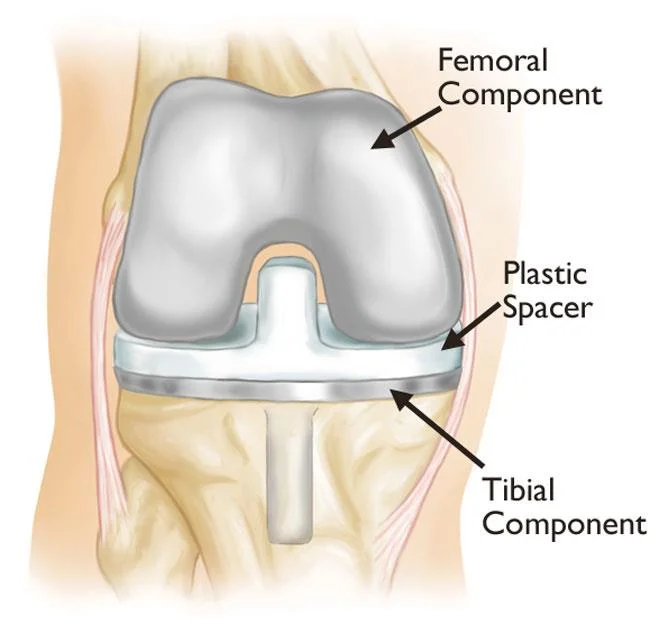Understanding Primary Knee Replacement
Primary knee replacement, also known as total knee replacement (TKR), is a surgical procedure aimed at relieving severe knee pain and restoring function in patients with advanced arthritis or significant knee damage. Unlike knee resurfacing, which targets localized damage, primary knee replacement involves replacing the entire knee joint with prosthetic components to alleviate pain and improve mobility.
During a primary knee replacement, the damaged cartilage and bone are removed from the knee joint and replaced with metal and plastic implants. This results in a smoother joint surface, reduced pain, and enhanced knee function, allowing patients to return to their daily activities with improved quality of life.

Do You Require Primary Knee Replacement?
If you are suffering from persistent and debilitating knee pain, stiffness, and limited mobility, primary knee replacement may be the recommended treatment option for you. Severe knee arthritis, traumatic injuries, or other conditions affecting the knee joint can significantly impact your ability to perform daily tasks and enjoy an active lifestyle.
Signs You May Need Primary Knee Replacement:
- Severe and Chronic Knee Pain
- Limited Range of Motion
- Difficulty Walking or Standing
- Swelling and Inflammation
- Failure of Conservative Treatments
- Progressive Joint Degeneration
- Impact on Daily Activities and Quality of Life
If you are experiencing these symptoms or have been diagnosed with advanced osteoarthritis, rheumatoid arthritis, or other degenerative knee conditions, it is crucial to consult with an experienced orthopaedic specialist for a comprehensive evaluation. Dr. Safiuddin Nadwi and the team at Dr. Joints are committed to providing personalized and effective orthopaedic care to help you regain mobility, alleviate pain, and improve your quality of life.
Advantages or Benefits of Primary Knee Replacement:
- Significant Pain Relief: Primary knee replacement effectively alleviates severe knee pain, allowing patients to resume their daily activities with reduced discomfort.
- Improved Mobility and Function: Patients typically experience improved knee function and enhanced mobility following primary knee replacement, enabling a more active and fulfilling lifestyle.
- Long-lasting Results: When performed by an experienced orthopaedic surgeon, primary knee replacement can provide long-term relief from knee pain and lasting improvement in joint function.
- Enhanced Quality of Life: The reduction or elimination of knee pain and improved knee function can significantly enhance the overall quality of life for patients.
Why Choose Dr. Joints for Primary Knee Replacement:
Choosing Dr. Joints for primary knee replacement means opting for surgical excellence, innovative technology, and compassionate care. Contact us today to learn more about how Dr. Nadwi and his dedicated team can help you achieve improved mobility and a better quality of life.
FAQs on Primary Knee Replacement:
Candidates for primary knee replacement typically have advanced arthritis, significant knee damage, or other conditions affecting the knee joint that do not respond to conservative treatments.
Recovery time can vary depending on the individual, but most patients can expect to return to normal activities within a few weeks to a few months following the procedure.
Like any surgical procedure, there are risks involved, including infection, blood clots, and complications related to anesthesia. However, these risks are minimized when the procedure is performed by an experienced orthopedic surgeon like Dr. Joints.
Yes, physical therapy is an essential part of the recovery process and can help improve strength, flexibility, and range of motion in the knee.
With proper care and maintenance, the implants used in primary knee replacement can last for many years, providing long-lasting relief from knee pain and improved joint function.
Candidates for primary knee replacement typically have advanced arthritis, significant knee damage, or other conditions affecting the knee joint that do not respond to conservative treatments.
Recovery time can vary depending on the individual, but most patients can expect to return to normal activities within a few weeks to a few months following the procedure.
Like any surgical procedure, there are risks involved, including infection, blood clots, and complications related to anesthesia. However, these risks are minimized when the procedure is performed by an experienced orthopedic surgeon like Dr. Joints.
Yes, physical therapy is an essential part of the recovery process and can help improve strength, flexibility, and range of motion in the knee.
With proper care and maintenance, the implants used in primary knee replacement can last for many years, providing long-lasting relief from knee pain and improved joint function.

